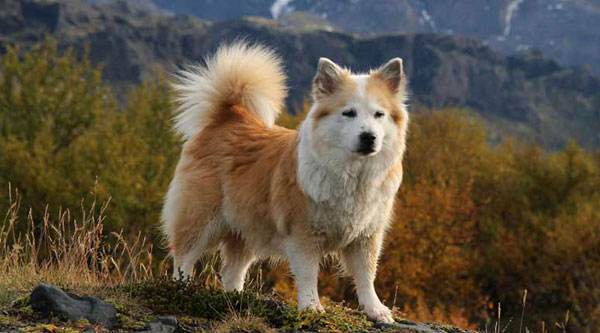Icelandic Dog
IUCN
LCBasic Information
Scientific classification
- name:Icelandic Dog
- Scientific Name:Icelandic Sheepdog, Friaar Dog
- Outline:Carnivora
- Family:Canidae
Vital signs
- length:30-41cm
- Weight:9-14kg
- lifetime:12-14year
Feature
The Icelandic Dog is a versatile breed and is an excellent herding and guard dog in Iceland.
Distribution and Habitat
Origin: Iceland
Appearance
The head is strong and compact. The skull is slightly longer than the muzzle. The head is triangular in shape when viewed from above or from the side. The nose is black or dark brown. The muzzle is well developed and the bridge of the nose is straight. The lips are black or dark brown and close together. The eyes are medium-sized, almond-shaped and dark brown. The ears are erect, medium-sized, triangular, with rounded tips and are quick to turn when responding to sounds. The neck is medium-length, well-muscled and the skin is compact. The body is strong, with a straight back, strong and muscular. The croup is moderately short and wide. The chest is deep and broad. The abdomen is slightly tucked up. The tail is set high and curled on the back. The forelegs are straight, and the hind legs are broad and well-muscled. The feet are oval, slightly arched and compact, with well-developed pads. The coat is double-layered and thick. There are two types of coat, short-haired and long-haired, but
Details
The Icelandic Dog originated in Iceland in the 17th century. Also known as the Icelandic Sheepdog and the Friaar Dog, it is the only native breed in Iceland.

Brought to Iceland by Scandinavian colonists between 874 and 930 AD, the Icelandic dog and its working methods are well adapted to the local terrain and animal husbandry methods, and Icelanders who have struggled for survival for centuries have regarded it as an indispensable animal herder. Some say the Icelandic dog was introduced to Iceland by the Norwegians, who called it the Frya. The Icelandic dog may have been descended from the Norwegian Shepherd Dog, which, like the Norwegian Shepherd Dog, looks very similar to other types of Foxhounds, and is primarily a sheepdog rather than a hunting dog.
The Icelandic dog had a rough history at the turn of the 19th and 20th centuries. The dogs often ate the carcasses of infected sheep and contracted echinococcosis, which infected their owners. To control the spread of echinococcosis, keeping dogs was banned in Reykjavik, the capital of Iceland. The ban is still in effect, and various anti-helminth drugs have controlled the occurrence of parasitic diseases. This epidemic brought the Icelandic dog to the brink of extinction. Later, it survived with the joint efforts of breeders and enthusiasts in Iceland and the UK. In the past few decades, the number of Icelandic dogs has increased, and although the number is still small, it is no longer in danger of extinction.
Icelandic dogs are very friendly to humans and get along very well with children. Although they may have some resistance to other pets at first, I believe that after proper training and guidance, they can also get along well under the same roof. Since they are almost born to graze, they also need a lot of exercise. If the owner does not take them for a walk, they will be very naughty at home. Thanks to their very high intelligence, it is also very easy to train. For such an energetic dog, it is not recommended for novice owners to keep it, nor is it suitable for keeping it in an apartment.
Protect wild animals and eliminate game.
Maintaining ecological balance is everyone's responsibility!








